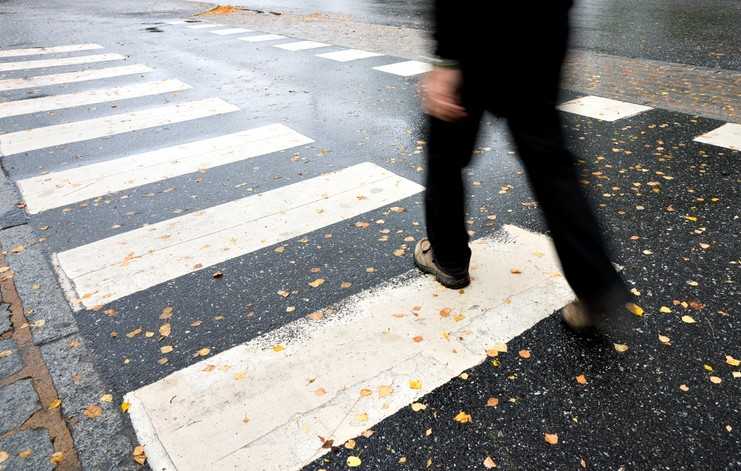Why is Florida Among the Most Dangerous States for Pedestrians?
Florida’s sunny weather and diverse attractions draw millions of tourists and new residents annually. While the Sunshine State has many appealing qualities, it also carries the unfortunate distinction of being one of the most hazardous places for pedestrians in the United States.
If you or someone you care about has been involved in a pedestrian accident in Florida, our legal team at The Law Offices of Keith Bregoff in Vero Beach, FL, is here to provide guidance and representation. Contact us today by calling 772-492-8967 for a consultation, and let us be your voice for justice.

The Statistics Speak for Themselves
According to data from the Governors Highway Safety Association, Florida ranked as the deadliest state for pedestrians in 2022, with 831 pedestrian fatalities that year. This figure represented a staggering 41% increase from 2021 and the highest number of pedestrian deaths in any state in three decades.
On a per capita basis, Florida had 3.8 pedestrian fatalities per 100,000 residents in 2022, significantly higher than the national average of 2.4 deaths per 100,000 people. The state accounted for a disproportionate 11.7% of total U.S. pedestrian deaths despite having only 6.5% of the population.
This data is a clear indicator that pedestrian fatalities remain elevated in Florida, maintaining its ranking as one of the nation’s most dangerous states for those traveling on foot.
Factors Contributing to the High Pedestrian Death Rate
Multiple intersecting factors contribute to Florida’s alarming pedestrian fatality rate. Being aware of these underlying causes is crucial for implementing effective solutions to improve pedestrian safety.
- Population growth and dense urban areas: Florida’s population has surged in recent years, with many new residents flocking to major metropolitan areas like Miami, Tampa, Orlando, and Jacksonville. These densely populated regions often lack adequate infrastructure to accommodate the influx of pedestrians, motorists, and cyclists sharing the roads.
- High numbers of older pedestrians: Florida has a higher concentration of older adults compared to most other states. Seniors are particularly vulnerable as pedestrians due to factors like decreased mobility, vision impairments, and longer reaction times. The state’s high population of retirees contributes significantly to its pedestrian fatality statistics.
- Tourism and seasonal population shifts: As a prime tourist destination, Florida experiences substantial seasonal population fluctuations. Visitors unfamiliar with local traffic patterns and pedestrian infrastructure face increased risks when navigating the state’s roads on foot.
- Sprawling development and transportation challenges: Many Florida communities were developed with an emphasis on automobile transportation, resulting in sprawling neighborhoods with limited walkability. Long distances between destinations, sparse pedestrian infrastructure, and high-speed roadways create hazardous conditions for those traveling by foot.
- Dangerous driver behaviors: Aggressive driving, speeding, impaired driving, and distracted driving are significant contributors to pedestrian accidents in Florida. The state’s warm climate and popularity with tourists and seasonal residents may exacerbate these risky behaviors among some motorists.
- Inadequate pedestrian infrastructure: Despite recent improvement efforts, many areas of Florida still lack sufficient pedestrian infrastructure such as well-marked crosswalks, pedestrian signals, sidewalks, and lighting. This deficiency increases the exposure of pedestrians to potentially deadly conflicts with vehicles.
Potential Solutions to Address the Problem
Improving pedestrian safety in Florida will require a significant approach involving policymakers, urban planners, law enforcement agencies, and the general public. Some potential solutions include:
- Investing in pedestrian infrastructure improvements, including constructing more sidewalks, crosswalks, pedestrian bridges, and pedestrian signals, especially in high-risk areas.
- Implementing traffic calming measures, such as reducing speed limits, installing speed bumps, and narrowing travel lanes in pedestrian-dense zones.
- Enhancing education and awareness campaigns to promote safe driving practices and educate pedestrians on best practices for staying visible and alert.
- Increasing enforcement efforts targeting aggressive driving, speeding, impaired driving, and distracted driving behaviors that endanger pedestrians.
- Adopting urban planning policies prioritizing walkable, pedestrian-friendly community design and transportation options beyond personal vehicles.
- Encouraging the use of public transportation, ride-sharing services, and active modes of transportation like walking and cycling to reduce overall vehicle traffic volumes.
Addressing these key factors contributing to Florida’s high pedestrian fatality rate can help policymakers, urban planners, law enforcement, and the general public work together to create a safer environment for all road users, whether traveling by foot or by vehicle.
Our Legal Team at The Law Offices of Keith Bregoff is Here to Help
If you or someone you care about has been involved in a pedestrian accident in Florida, our legal team at The Law Offices of Keith Bregoff in Vero Beach, FL, is here to provide compassionate guidance and aggressive representation. We work to pursue fair compensation for medical expenses, lost wages, pain and suffering, and other damages resulting from these preventable tragedies.
Together, we can raise awareness about pedestrian safety issues and hold negligent parties accountable, working towards a future where all Floridians can walk safely in their communities. Contact us today by calling (772)-492-8967 for a consultation, and let us be your voice for justice.


